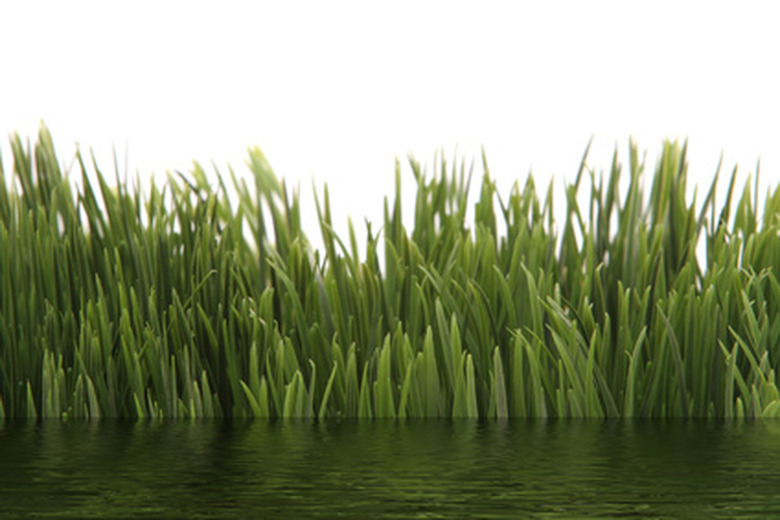How To Drain Wet Flower Beds
As soon as the snow melts and the temperature begins to warm, gardeners start itching to get into the garden. Most have to wait until the soil dries out from spring thaws and rains. Storms with "gully-washers" can drown many perennials and a continual wetland environment limits choice of plantings. Draining wet flower beds and borders requires some basic engineering and a bit of labor. Two techniques used most often to move water away from gardens are the French drain and the dry well.
French Drains
Step 1
Plan drainage to go around gardens, downhill to storm drains or swales. Drainage around or through a garden is accomplished using drain tile, also called a French drain.
- As soon as the snow melts and the temperature begins to warm, gardeners start itching to get into the garden.
- Two techniques used most often to move water away from gardens are the French drain and the dry well.
Step 2
Dig a trench about 24 inches deep around your garden or dig trenches on either side of the garden perpendicular to a swale or pointed toward a storm sewer inlet. Drop the trench at a rate of 1 inch for every running foot (its "fall") toward the swale or inlet to force water to run away from the garden.
Step 3
Fill about 6 inches in the bottom of the trench with gravel. Lay perforated PVC pipe or drain tile, covered with tile cover sleeves or permeable landscape cloth (available at most plumbing supply or hardware stores), along the lengths of the trench.
Step 4
Cover the pipes with more gravel up to a foot in depth and top with about 6 inches of sand. Amounts of materials will vary depending on the length and fall of the trench.
Step 5
Fill the upper part of the the drain with 4 to 6 inches of loamy topsoil that can be planted with moisture-loving plants. For a riverbed effect, line the surface with stones to allow faster surface drainage.
- Dig a trench about 24 inches deep around your garden or dig trenches on either side of the garden perpendicular to a swale or pointed toward a storm sewer inlet.
Dry Wells
Step 1
Identify a slow-draining low spot and dig a 2-foot hole. Fill the hole with water and allow it to drain, then fill it with water again. If the water hasn't drained after an hour or two, your soil contains too much clay and you'll need to expand it into a dry well.
Step 2
Dig a 3- to 4-foot hole with a post-hole digger, available at hardware stores and rental centers.
Step 3
Fill the hole with 2 to 3 feet of coarse gravel, then top with half a foot of sand and half a foot of topsoil.
Step 4
Place dry wells in low spots, at the end of downspouts for protection and at the junction of French drains.
Tip
Watch the garden when it rains to find out which direction water runs. Design all drainage from the garden to go in the same direction. Check to make sure that no downspouts empty into low spots or that the garden isn't located in a swale. Correct drainage issues around buildings before beginning in the garden. Your local government has elevation and drainage plans for your neighborhood. Check with public works or your building inspector for this information and any local regulations on French drains so you don't "go against the flow" in any way. Building drainage on a hill may require a series of French drains emptying into dry wells to navigate the steep fall.
Warning
Never dig without calling Diggers Hotline in your area to mark utility lines. Utilities will send people out to mark their lines for free because it saves them money in the long run. Make sure that drainage is your problem. If you dig a dry well and it fills with water, it is probably the result of a high water table, not bad drainage. You may need to consider building raised beds instead of digging French drains.
Things Needed
- Trenching hoe
- Garden spade and square-bladed shovel
- Drill
- Fabric drain cover or permeable landscape cloth
- Pea or other smooth gravel
- Clean sand
- PVC drain tile or pipe
